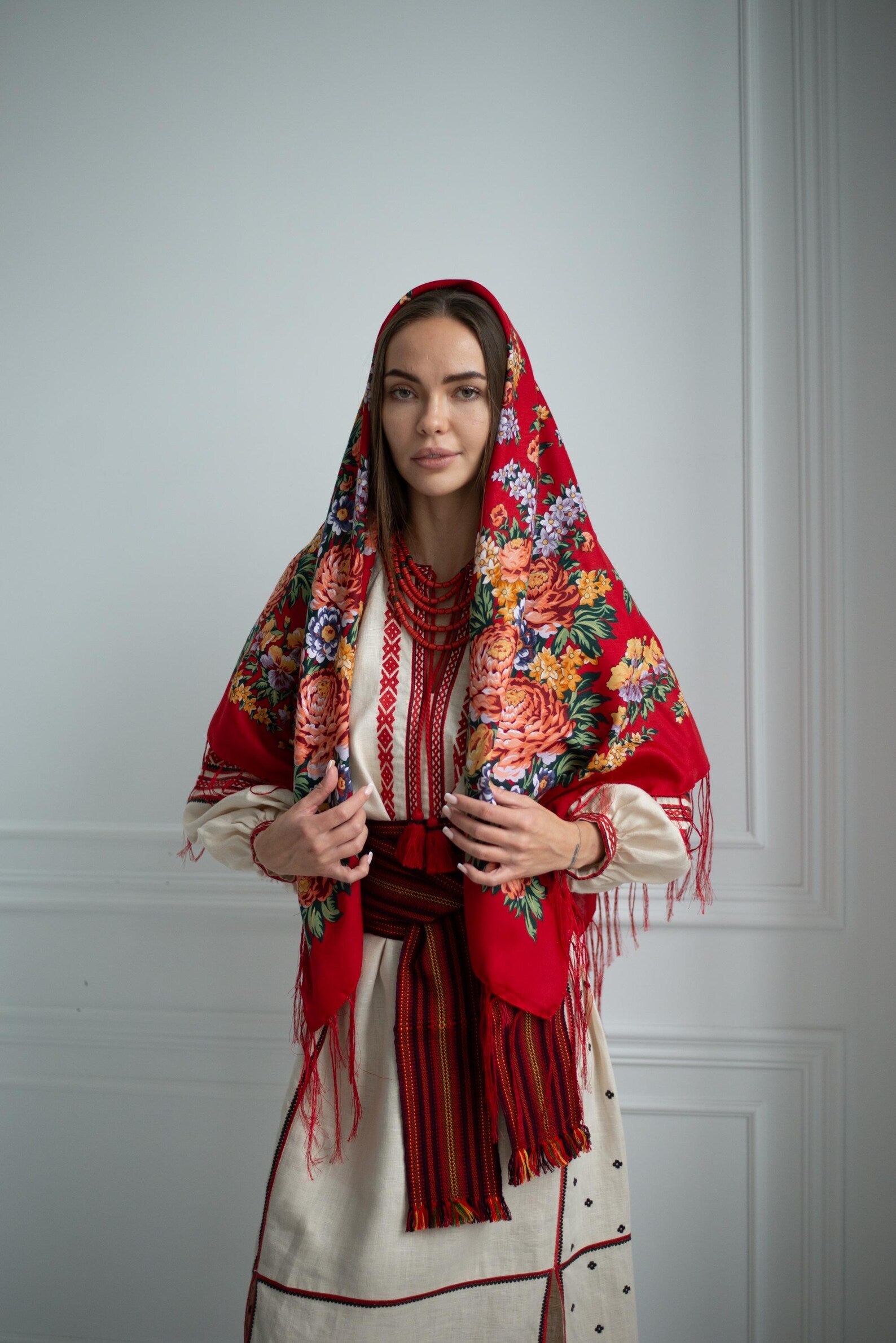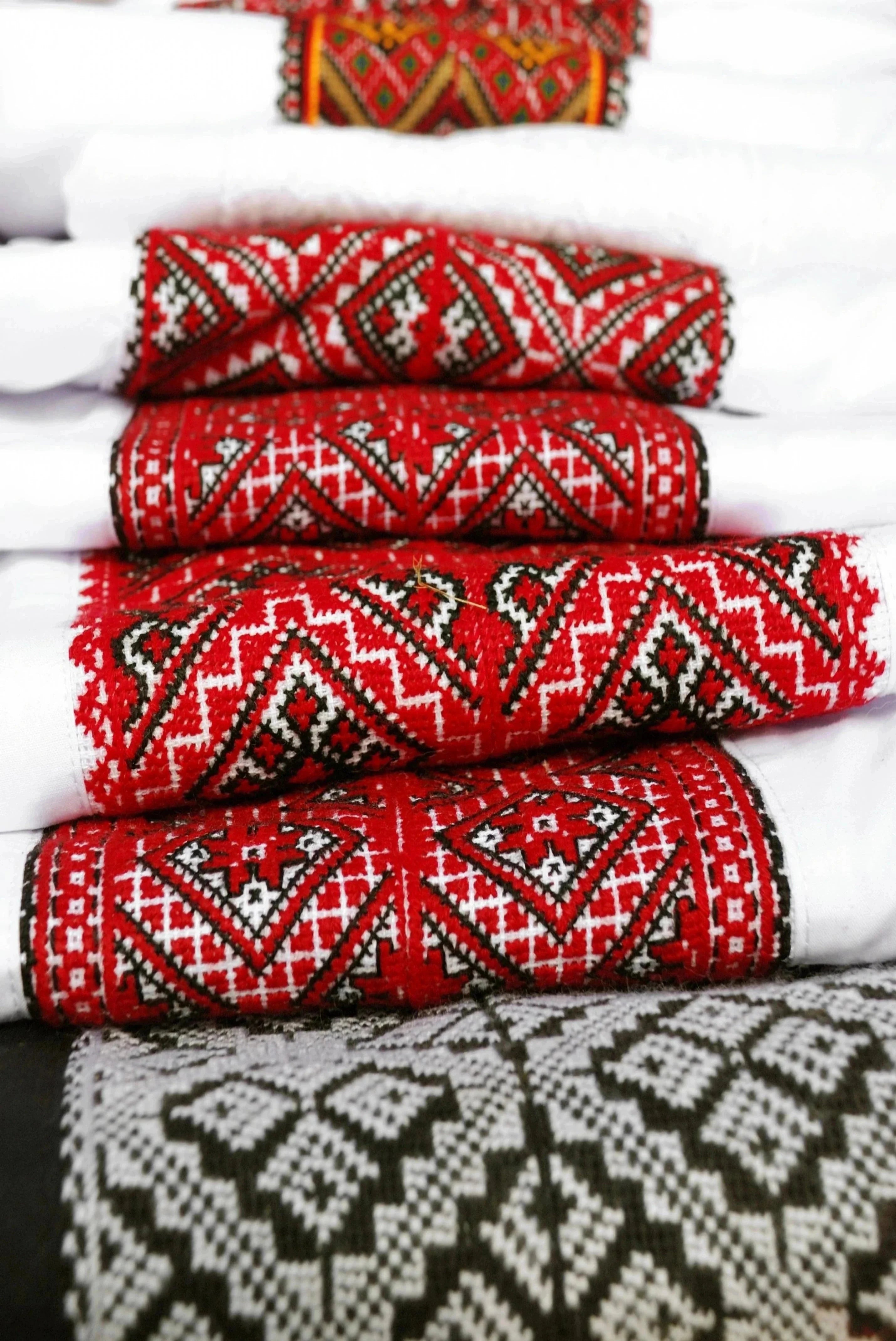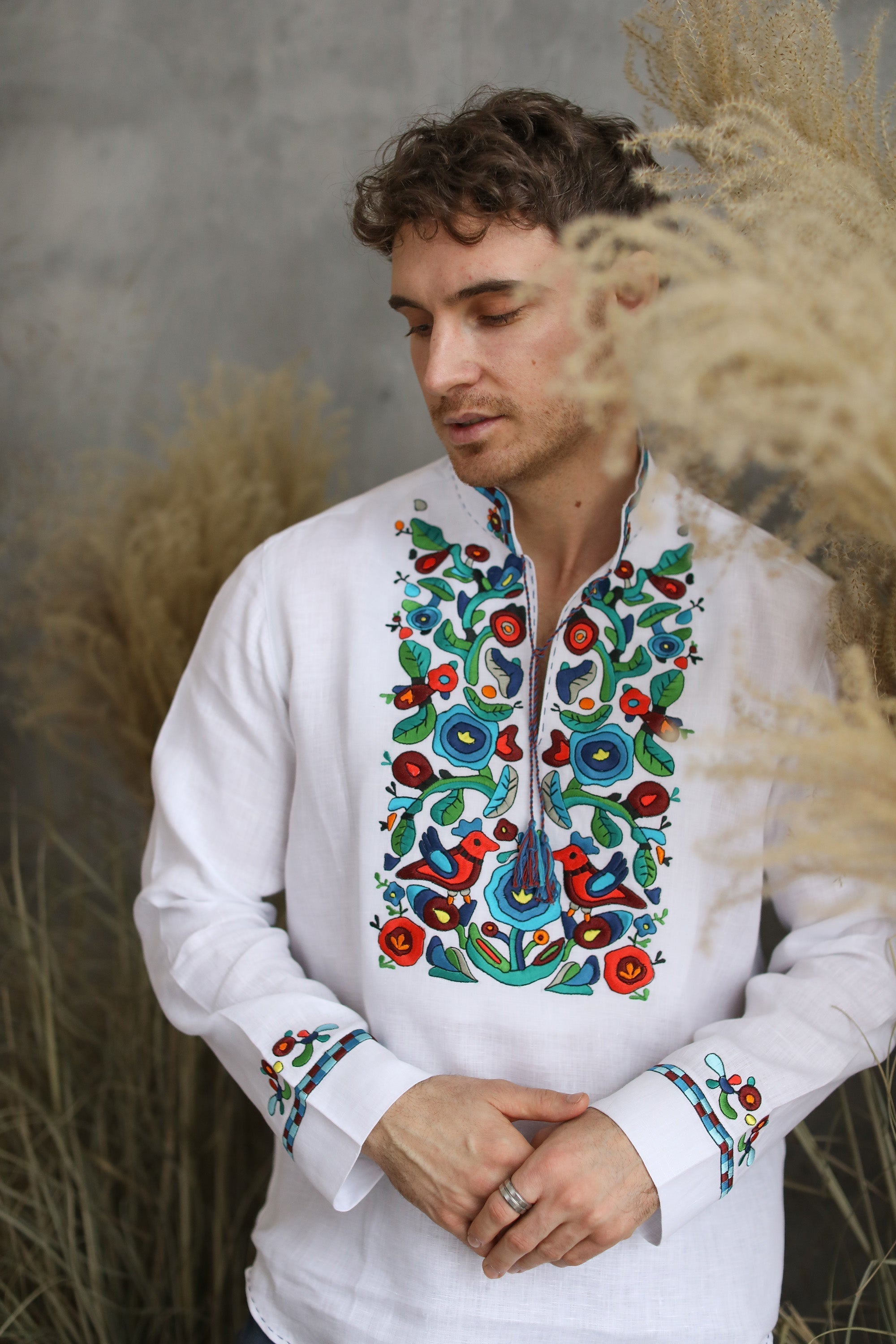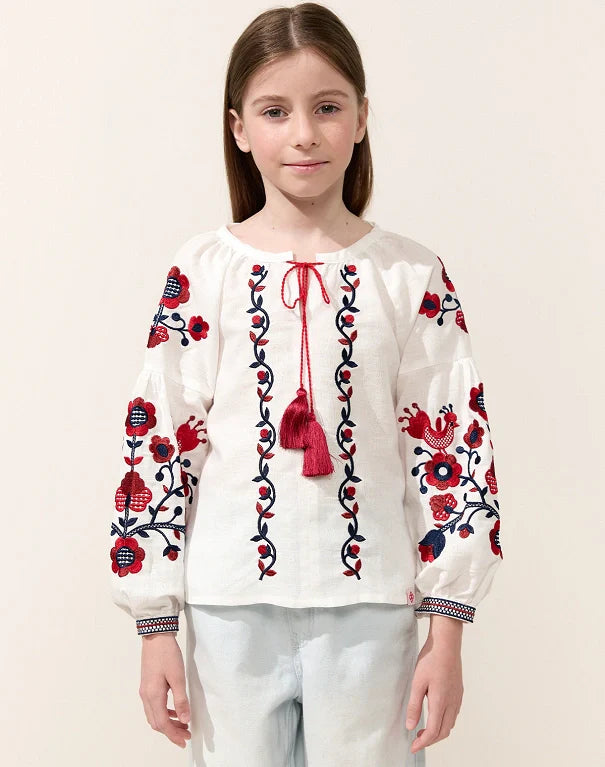
The Ukrainian Khustka: A Whisper of History in Every Fold
Picture this: a crisp autumn evening in a Carpathian village, where a woman with a warm glint in her eyes ties a vibrant khustka under her chin. The flowers on the fabric - red roses, lush peonies—seem to come alive under the flicker of a lamp, weaving tales of love, family secrets, and unyielding resilience. This is no mere piece of cloth.
This is the khustka, as it’s fondly called in Ukraine - a symbol that entwines the past with the present, villages with the wide world. As I write these words, I can almost see my baba pulling her cherished shawl from an old chest, the air filling with the scent of lavender and memories.
Let’s unfold this tapestry of history together, for the Ukrainian khustka is far more than an accessory. It’s a soul wrapped in color.
Roots in the Soil: The Birth of a Legend
Though shawls became widely associated with Ukraine in the 19th century, their beginnings were more modest. Unlike in neighboring regions where woolen production was common, on Ukrainian soil head coverings were traditionally made of homewoven linen.
Women tied these simple cloths or wore other forms such as the ochipok, a married woman’s cap. Only on rare occasions were actual khustkas woven locally, and even then, they were crafted from linen rather than wool.
As trade expanded, Ukrainian women began to embrace brightly decorated shawls made in textile centers across Eastern Europe. With their bold patterns and vibrant colors, they quickly found a place in local wardrobes.
Red flowers against dark backgrounds carried deep meaning: in Slavic culture, red symbolized beauty, joy, and the very pulse of life. Each region developed unique styles of tying and wearing the khustka, making it both personal and communal.
Bridges Across Oceans: The Shawl That Unites Worlds
Who could have imagined that a simple shawl could cross an ocean and weave cultures together? In the early 20th century, Ukrainian settlers in Canada’s prairies - Saskatchewan and Manitoba - brought their vibrant floral khustkas with them.
They shared these treasures with Indigenous women of the Cree and Metis nations, peoples whose cultures are steeped in reverence for family and the land. Cree women fell in love with these bright shawls, their roses and peonies harmonizing beautifully with their own intricate beadwork.
The shawls became known as kokum scarves, from the Cree word kokum, meaning “grandmother” - a symbol of wisdom, protection, and kinship. For the Cree, they were more than adornment; they carried memory and resilience, a reminder of women who endured hardship and colonization while preserving traditions.
In this way, the Ukrainian khustka and Cree beadwork intertwined, creating a living bond of friendship and cultural respect.
 This connection shines brightest on December 7, when Ukraine and its diaspora celebrate Ukrainian Headscarf Day. Launched in 2019, this day is a vibrant ode to beauty and heritage.
This connection shines brightest on December 7, when Ukraine and its diaspora celebrate Ukrainian Headscarf Day. Launched in 2019, this day is a vibrant ode to beauty and heritage.
Across Ukraine and in cities abroad, streets bloom with khustkas: young women tie them around their necks, mothers drape them over shoulders, and grandmothers wear them proudly under their chins. Cree elders in Canada also don their kokum scarves, honoring a tradition born more than a century ago.
In 2022, as war shook Ukraine, the khustka became a global emblem of solidarity. From Indigenous Canadians to European activists, people donned the khustka to say, “We stand with you.” A shawl born in village life now embraces the world, reminding us how symbols of care and family can bridge cultures across continents.
A Modern Dance: The Khustka in Fashion’s Embrace
The khustka refuses to be confined to history’s pages - it dances in the rhythm of today. In Kyiv, young fashionistas transform their babas’ shawls into bold statements: tied as neck scarves, draped over shoulders, or adorning handbags.
This isn’t nostalgia; it’s a renaissance. Designers play with materials - silk hand-painted with celestial blooms, airy linen with embroidered motifs, or modern reinterpretations that keep roots alive while looking forward.
Picture it: a gray floral shawl tossed over a crisp white vyshyvanka blouse, the perfect duo for an autumn stroll. Or a pastel silk khustka adding elegance to a business-casual outfit. Even brides weave heirloom scarves into wedding gowns, blending tradition with modern flair.
 Brands like Narodniy Dim Ukraine champion artisans, turning each khustka into a wearable work of art. In an era of fast fashion, the khustka stands as a quiet rebellion, declaring: “I am timeless, because I am true.”
Brands like Narodniy Dim Ukraine champion artisans, turning each khustka into a wearable work of art. In an era of fast fashion, the khustka stands as a quiet rebellion, declaring: “I am timeless, because I am true.”
Wrapped in Soul: Why the Khustka Endures
When I think of the Ukrainian khustka, I see more than fabric - I see a story pulsing with life. It’s like a grandmother’s embrace: warm, protective, brimming with love.
From weddings to pow-wows, from linen headcloths to silk masterpieces, the khustka evolves but never loses its essence. It reminds us: in every knot lies a piece of heritage, in every hue a spark of joy.
If you haven’t yet, take a khustka - yours or a new one - and tie it on. Feel it whisper, “You are part of something greater.” The Ukrainian khustka isn’t a fleeting trend. It’s love, wrapped in flowers.










